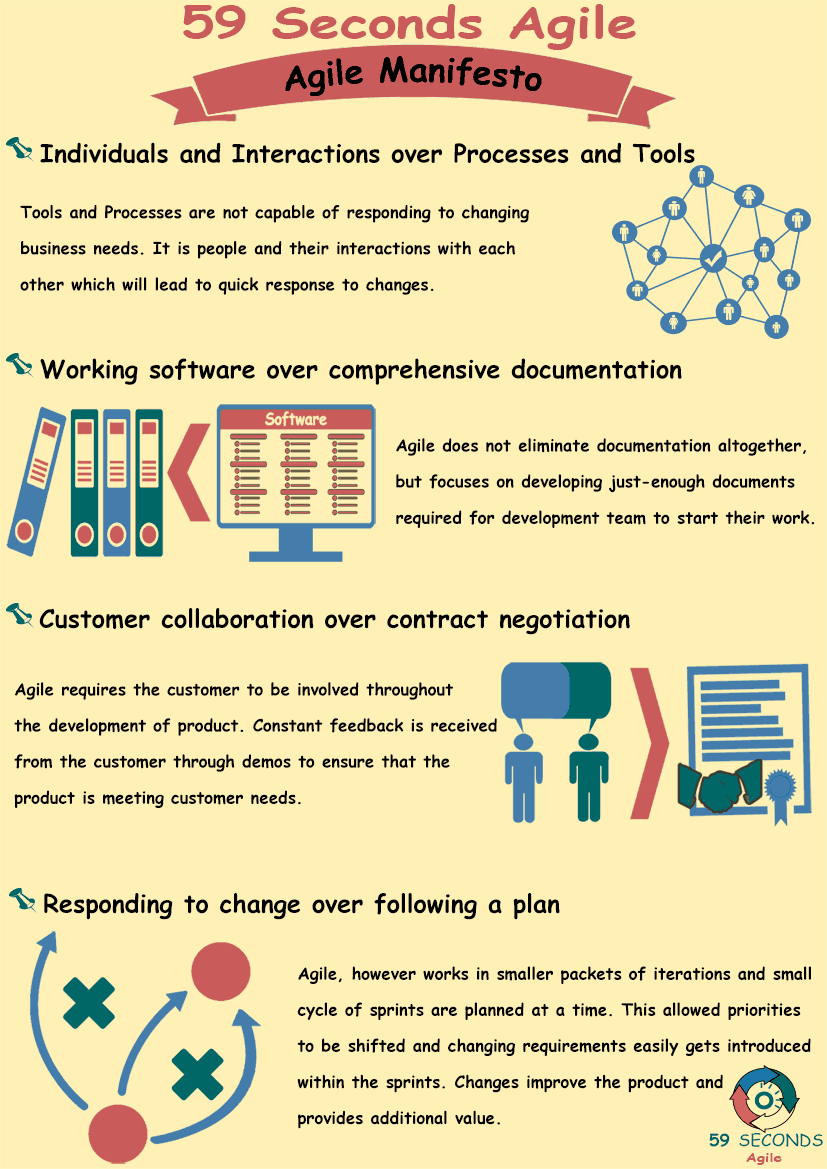Using the Agile Manifesto to Deliver Change
A 59 Seconds Agile Training Video
Continue to Part 8 Below
The Agile Manifesto
A 59 Seconds Agile Article
This article provides an ‘Introduction to the Agile Manifesto’ and looks to discuss what a values are stated within the Manifesto.
Responding to Change over Following a Plan
The fourth value of the Agile Manifesto prioritizes responding to change, instead of sticking with a predetermined plan. As with contract negotiation, the company sets a plan at the very beginning of the development process. This plan typically allows for little to no deviation.
No matter how much technical debt builds up, and how unfeasible a product might become, everyone must stick to the plan. This often results in a reduction of progress in the project. Slowed progress also reduces the value of any product updates that are delivered to the customer. However, because the contract stated the conditions, the developers must follow the plan and customers must accept what they receive.
Agile Development teams can adapt and respond to change. Product releases are frequent enough that the Product Owner can change the path of development early, and with little effort.
Traditionally, changes near the end of the development process were complex and difficult. With Agile projects, developers can simply change going forward and create a product that appeals more to the stakeholders. This cuts development time, reduces unnecessary changes, and increases value for the customer.
Continue Reading —> Next
The Agile Manifesto
A 59 Seconds Agile Video Animation
Continue Reading —> Next
User Stories Applied
A 59 Seconds Agile Book Review
User Stories Applied by Mike Cohn is one of our favourite books on Agile User Stories. The book starts with an overview into user stories, and details what a user story is and the different aspects of them. He then discusses how to go about writing a user story, and provides details of the INVEST criteria that can be used to determine if the story is meeting all of its objectives. Next Mike gives an in depth discussion of who user stories are written for and where to begin when gathering the details for them. The book then discusses acceptance testing user stories, including how to go about specifying these criteria and the responsibilities of the development team and customers during this process.
Continue Reading —> Next
The Agile Manifesto
A 59 Seconds Agile Infographic

Continue Reading —> Next
Agile Scrum Master Training Course
Our Favourite Agile Books
We found these books great for finding out more information on Agile Scrum:
Continue Reading —> Next


